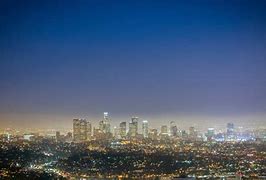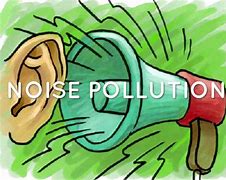
Air Pollution
Air contamination is the presence of substances in the environment that are hurtful to the wellbeing of people and other living creatures or cause harm to the environment or to materials. There are a wide range of kinds of air toxins, like gases, particulates, and natural atoms. Air contamination might cause illnesses, sensitivities and even passing to people; it might likewise make hurt other living creatures, for example, creatures and food crops, and may harm the common habitat or fabricated climate. Both human movement and normal cycles can create air contamination.
Noise Pollution
Noise pollution, also known as environmental noise or sound pollution, is the propagation of noise with ranging impacts on the activity of human or animal life, most of them harmful to a degree. The source of outdoor noise worldwide is mainly caused by machines, transport, and propagation systems. Poor urban planning may give rise to noise disintegration or pollution, side-by-side industrial and residential buildings can result in noise pollution in the residential areas.

Light Pollution
Light contamination is the presence of undesirable, unseemly, or over-the-top counterfeit lighting. From an engaging perspective, light contamination alludes to any ineffectively carried out lighting, during the day or night, and can be found as an issue all through the levels of our social orders. Affecting right from the individual level, for example, from an undesirable flickering light on a buyer item to a local area level, similar to another metropolitan improvement affecting existing networks from half-baked streetlamps.

Thermal Pollution
Warm contamination, some of the time called "warm advancement," is the debasement of water quality by any interaction that changes encompassing water temperature. Warm contamination is the ascent or fall in the temperature of a characteristic waterway brought about by human impact. Warm contamination, in contrast to synthetic contamination, brings about an adjustment of the actual properties of water. A typical reason for warm contamination is the utilization of water as a coolant by power plants and modern makers. Metropolitan overflow—stormwater released to surface waters from streets and parking garages—and repositories can likewise be a wellspring of warm contamination. Warm contamination can likewise be brought about by the arrival of freezing water from the foundation of repositories into hotter streams. At the point when water utilized as a coolant is gotten back to the common habitat at a higher temperature, the abrupt change in temperature diminishes oxygen supply and influences environment organization. Fish and different organic entities adjusted to specific temperature reach can be killed by an unexpected change in water temperature (either a fast increment or reduction) known as "warm shock." Warm coolant water can likewise have long-haul consequences for water temperature, expanding the general temperature of water bodies, including profound water. Irregularity impacts how these temperature increments are dispersed all through the water section. Raised water temperatures decline oxygen levels, which can kill fish and adjust natural pecking order arrangement, decrease species biodiversity, and encourage attack by new thermophilic species.

Environmental Pollution
Natural Pollution is a friend investigated scholarly diary covering the organic, wellbeing, and biological impacts of ecological contamination. It was set up in 1980 of every two sections: Environmental Pollution Series A: Ecological and Biological and Environmental Pollution Series B: Chemical and Physical. These parts were converged in 1987 to shape the diary under its present title. It is distributed by Elsevier and the editors-in-boss are David O. Craftsman and Eddy Y. Zeng. As indicated by the Journal Citation Reports, the diary has a 2020 effect factor of 8.071.






0 Comments
If you have any query or suggestion , you can comment